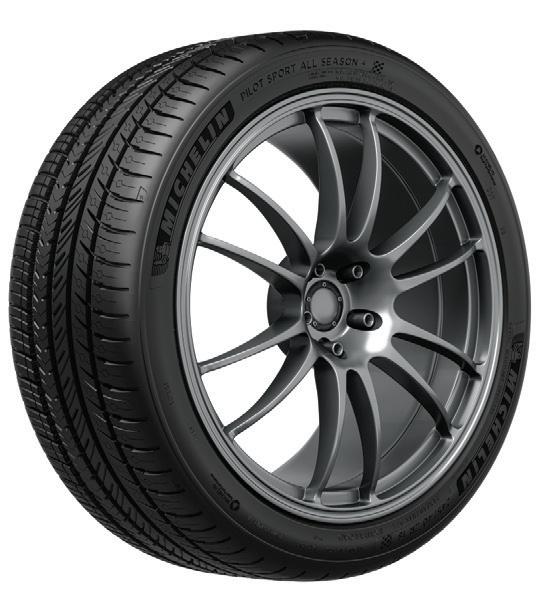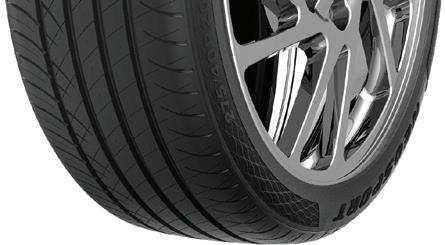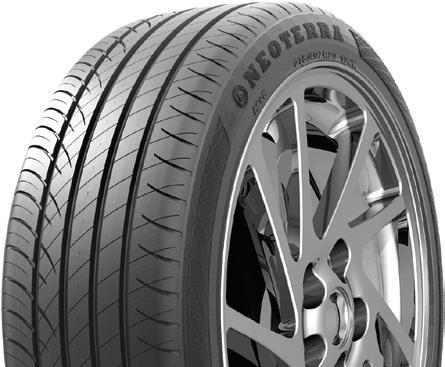
3 minute read
Ultra-high performance tires

from Modern Tire Dealer - February 2023
by EndeavorBusinessMedia-VehicleRepairGroup
Mary Ma of Keter Tire says, “OEM engineers are now so in tune with tire technology they actually build tire performance into their vehicles.” harshness and rolling resistance continue to be important criteria.
If tires are to be tted on a battery electric vehicle, one of the rst concerns is the tire’s ability to support a signi cantly higher vehicle load compared to a gas-powered vehicle. is is why when it’s time for the original tires to be replaced, the same OEM-speci ed tire or a tire rated for EV use should always be selected as a replacement.
Ed Gliss, OE/UHP product category manager, Michelin North America Inc.: Present and next-generation performance vehicles now have various propulsion method options — the traditional internal combustion engine, hybrid powertrains and of course, pure electric.
Regardless of those methods, OEMs are not asking for performance tires that are dramatically di erent from years past.
Rolling resistance — or the eciency of the tire — is now a metric that comes up more often during the development process. However, traditional metrics like peak grip, lateral rmness, steering precision and wet traction remain relevant.
Jason Yard, marketing manager, Nexen Tire America Inc.: Each OEM is di erent, but all OEMs are looking for well-rounded tire performance. Reduced rolling resistance and lower NVH levels continue to be high on the priority list,
Michelin’s Ed Gliss says one way for a tire dealer to increase performance tire sales is “having key sizes in stock.” but not at the expense of other performance (attributes), like stopping distance or snow traction.
For performance models, we see OEMs skewing the balance of performance towards handling and higher wet and dry grip levels, as you would expect. ere is not really a next generation of performance tires. Rather there is a continuous evolution, with the goal of expanding the total performance envelope.
Oosthuizen Andre, head of consumer and trade marketing, Pirelli Tire North America Inc.: Performance tires are changing as the modern de nition of performance is also changing. OEMs are still searching, in some cases, for traditional max performance tires — maximum mechanical grip in order to optimize vehicle speed and track performance, with increasingly larger and larger wheels sizes.
Jason
However more and more we are seeing performance tire requests to include low rolling resistance, low noise levels and a high degree of safety — wet and snow — performance. It is no longer good enough, in most cases, for tires to simply be fast. ey must also balance the relevant attributes of that performance vehicle, which are increasingly becoming electri ed.
Jared Lynch, director of U.S. sales, Sailun Tire Americas: e performance tire in the last decade has made a lot of progress in traction and handling. So how do we evolve from there? (OEMs) want tires to give them that same level of traction (and) that same level of handling, but to increase longevity. Can you double that tread life? at’s really where performance tires are starting to go.
“More and more we are seeing performance tire requests to include low rolling resistance, low noise levels, and a high degree of safety (wet and snow) performance” from original equipment manufacturers, says Oosthuizen Andre from Pirelli.



Five or six years ago, you saw a lot of UHP all-season (tires) that emulated the performance of a summer tire — with tread life of 30,000 to 35,000 miles. Now fast forward ve more years and that’s not good enough anymore. Can we push it closer to 50,000 miles? When we get to 50,000 miles, I’m sure they’ll want 70,000 or 80,000 (miles).
David Pulla, national sales manager in Canada, Sailun: We’ve seen the touring tire become V-rated where it’s entering that high performance category. With that said, and with increasing the speed rating, (they) want to maintain longevity where that (tire) is lasting the equivilant, if not longer, than a touring tire.
Nick Gutierrez, sales director, Sentury Tire USA: With increased fuel prices, consumers want e ciency and this means rolling resistance matters. e highest standards of quality and durability are a given, but I think OEMs are also expecting great support for the consumer, like easily accessible information regarding where to purchase replacement tires and what the warranties are.
“It’s very important, now more than ever, that you have a very strong value-tier brand,” says Jared Lynch, director of U.S. sales, Sailun Tire Americas. “You can save your customers a lot of money and that resonates and means a lot to so many customers.”










